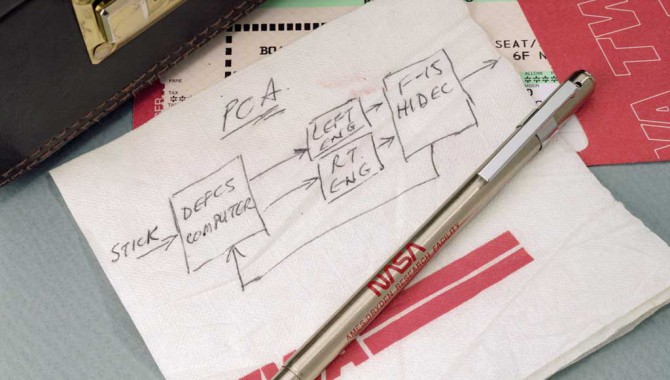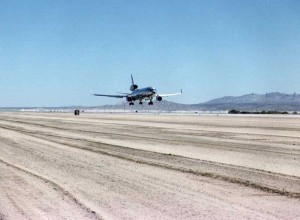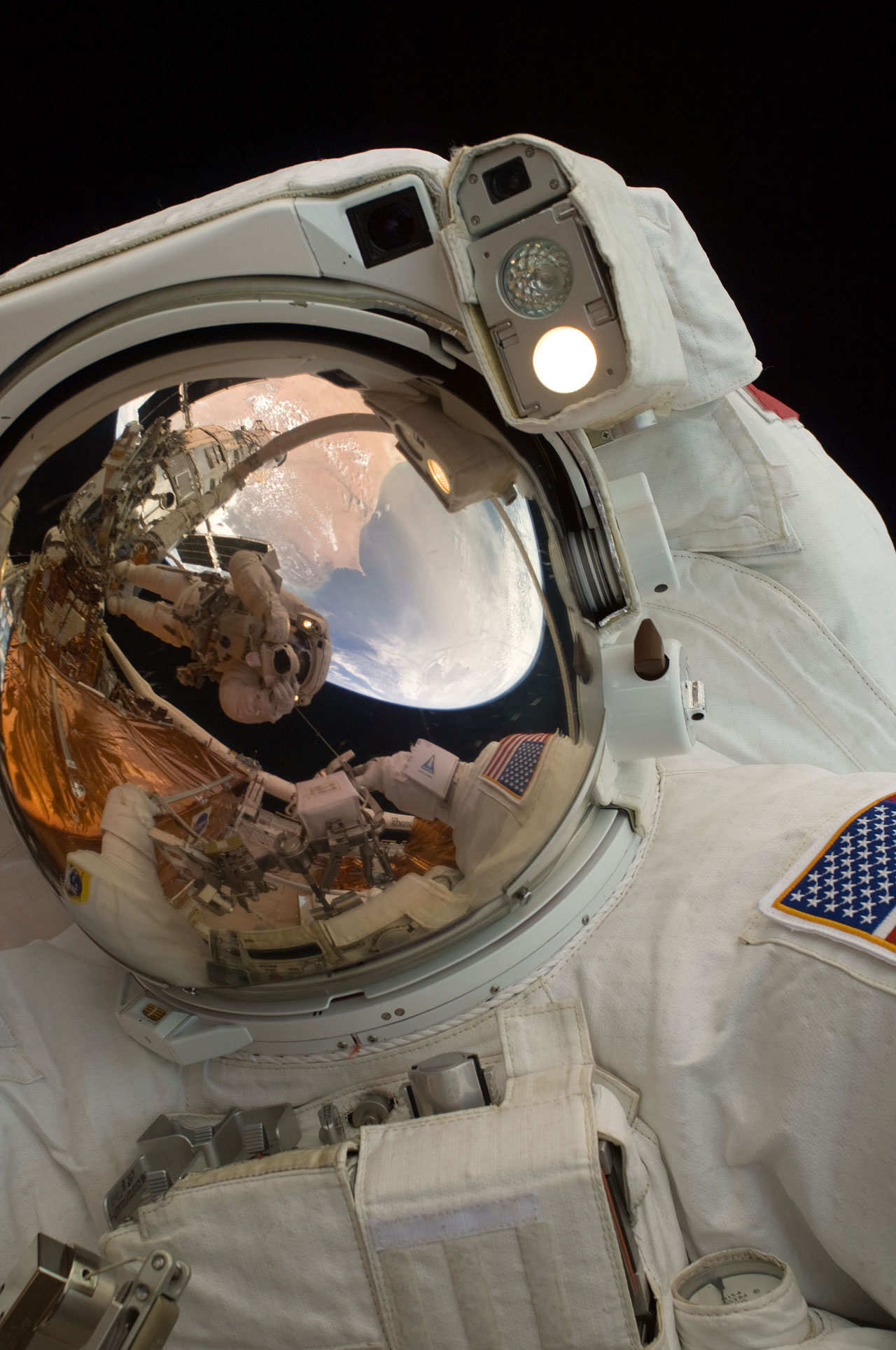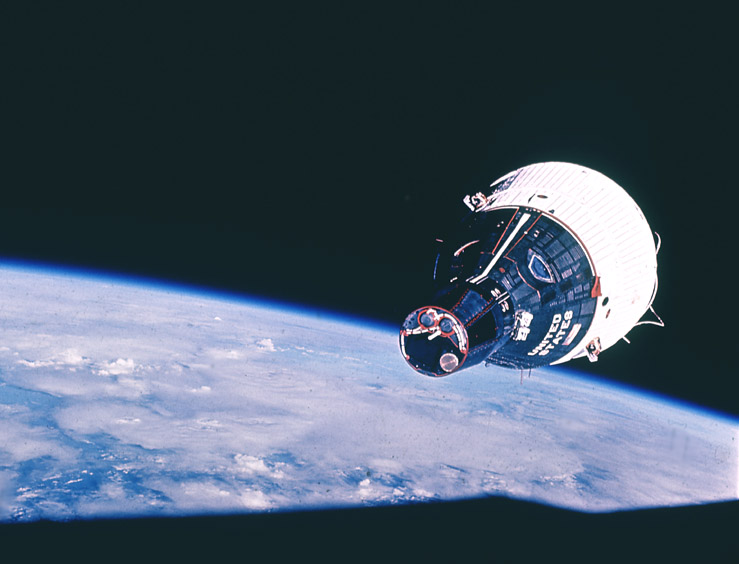
Frank “Bill” Burcham’s napkin sketch for the Propulsion Controlled Aircraft (PCA) system. Photo Credit: NASA/Dryden Flight Research Center (Dennis Taylor)
November 30, 2010 Vol. 3, Issue 11
This month marks the 15th anniversary of modified thrust-only airliner landing tests at Drydena good idea that started on a napkin.
During the 1970s and 1980s, approximately 1,200 fatalities resulted from a series of military and civilian incidents caused by a loss in the primary flight-control system. Frank “Bill” Burcham, chief propulsion engineer at Dryden Flight Research Center, was determined to crack this problem. He sketched out a possible solution to the failures on the back of his TWA cocktail napkin in 1989. The result was the Propulsion Control Aircraft (PCA) system.
Typically, an airplane lands using normal control surfaces like elevators, rudders, and ailerons controlled by hydraulic flight controls. The PCA system offers an alternative way to safely land an airplane when the controls system failed. The system is a computer-assisted engine-control system that lands an airplane using only the thrust of the engines, eliminating the need to have an alternative, hydraulics-dependent backup flight control system.

First landing of the McDonnal Douglas MD-11 aircraft using the PCA system on August 29, 1995. Photo Credit: NASA/Dryden Flight Research Center
Burcham’s idea was met with initial skepticism due to the necessity of human skill and comfort with computer fight systems. The PCA system used standard autopilot controls already present in the cockpit to increase and decrease engine thrust. These changes altered and controlled pitch and yaw movements. Because thrust response is slow, and executing the maneuvers manually would require extensive practice and focus by the pilot, the system used digital flight control computers to significantly improve flight precision and reduce pilot workload.
The time for testing and simulation came in 1995. The system, developed by NASA Dryden Flight Research Center in collaboration with industry partners McDonnell Douglas Aerospace (now Boeing), Pratt & Whitney Aircraft, and Honeywell, Inc, was tested in F-15 and MD-11 aircraft. The first touchdown of an MD-11 using PCA occurred on August 29, 1995 at Edwards Air Force Base. On November 29 and 30, pilots successfully landed MD-11 planes using Burcham’s PCA system in combination with a modification called Instrument Landing System, an improvement proposed by engineering analyst Joe Conley.
Since the 1995 landings, PCA has had little impact on the commercial airline industry. A majority of commercial airliners do not have full authority digital engine controls, a modification PCA technology requires to function. These aircraft are typically in service for twenty-five years. For legal reasons, the airline industry will not install PCA systems on only part of the total fleet.
Since its initial conception, two newer, less sophisticated versions of the PCA system have been developed: PCA-Lite and PCA-Ultralite. These versions are cheaper, more adaptable, and do not require changes in the airplane’s engine-control computer like the initial version requires. But full implementation of the system is still pending.
Read more about the people behind the PCA system.
Frank “Bill” Burcham’s napkin sketch for the Propulsion Controlled Aircraft (PCA) system
Featured Photo Credit: NASA/Dryden Flight Research Center (Dennis Taylor)







